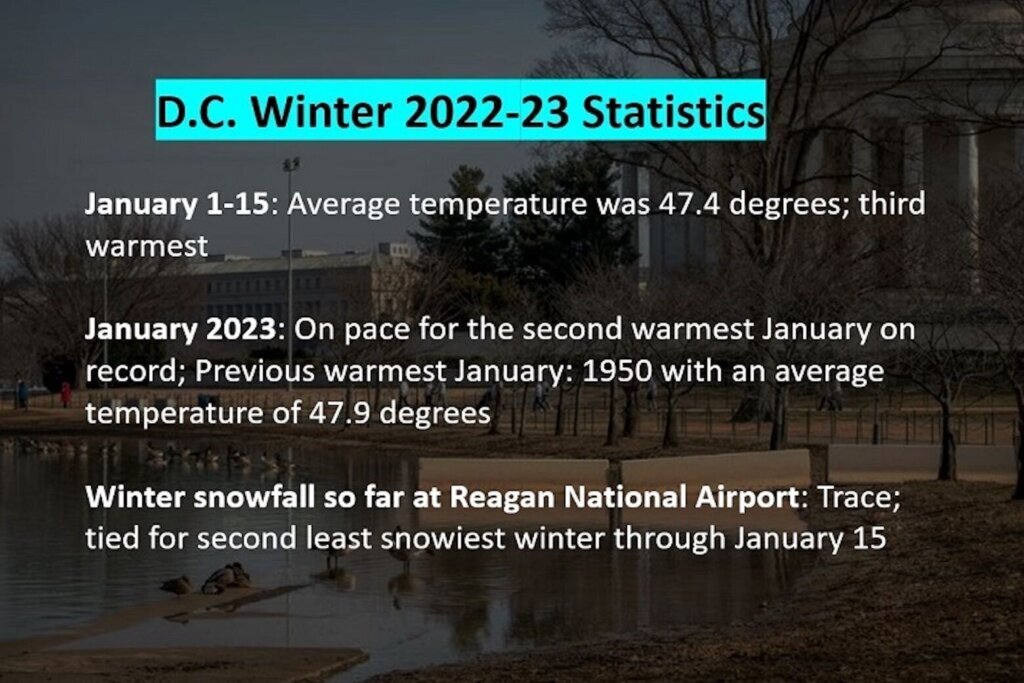The first half of January was the third warmest on record, and the warmth is allowing D.C.’s cherry blossoms to show some life.
The traditional coldest month of the year in the nation’s capital has been more like spring or late fall and Mother Nature doesn’t have other tricks up her sleeves anytime soon. The warmth is allowing patches of life to emerge at the Tidal Basin with the cherry blossoms.
The average temperature in D.C. through the first half of the month is 47.4 degrees, enough to rank this January as the third warmest to date. If we stay on track, it will be the second warmest January on record, just behind 1950.
To put things in perspective, this January feels more like March or November, when the average temperature is in the upper 40s.

It probably doesn’t come as a surprise that D.C. has only seen trace snow amounts since the beginning of winter. This ranks with 11 other winters as the second least snowy through mid-January.
Rainfall since the start of winter has reached 4.28 inches, which is behind the average of 6.27 inches for December through January. The latest trends show several Pacific systems will lessen the deficit through the end of the month.
The next two weeks show no sign of sustainable colder-than-average temperatures, with only the last few days of the month bringing any potential snow to the D.C. region.
Concerned that the cherry blossoms are going to bloom well ahead of schedule this year?
There are already signs the cherry blossoms are starting to come to life at the Tidal Basin, with snowdrops emerging in patches. Don’t worry, as snowdrops are bulbs that often appear in February and come up through the snow in colder climates. Snowdrops don’t suffer from cold weather damage when temperatures drop below freezing.
Warm early to mid-winter temperatures won’t push the blooms out months ahead of schedule. Instead, temperatures in February and March have the most bearing on when peak bloom occurs. For example, a warm early March will allow peak bloom to occur well ahead of schedule by weeks (average peak bloom is March 28 to April 5), while a cold March start will delay peak bloom to April.
To provide flavor: on the last 10 years of peak bloom, the earliest date was March 20 in 2020 and 2012.
Keep up-to-date on the latest weather forecast on the 8’s on WTOP.








